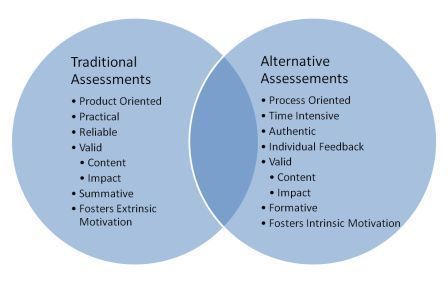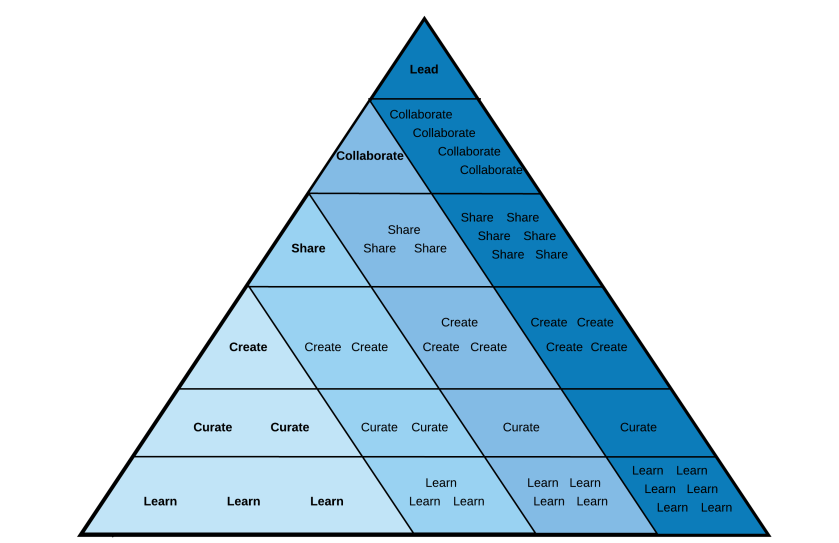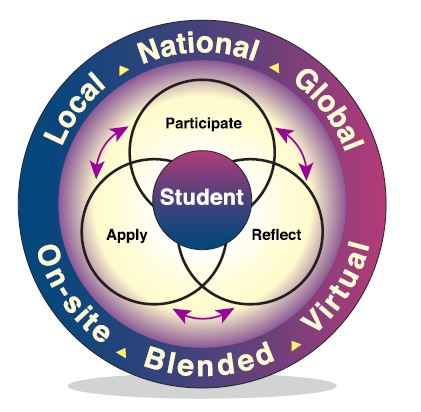
Picture from https://abdao.wordpress.com/2015/07/18/traditional-vs-authentic-assessment/
While I don’t think that we really can or should formally assess authentic learning, we still work in a system that requires it. So here is what I am doing until things change….
The third week of summer is here and I have had some time to unwind and I am starting to relax and reflect on the last school year. As crazy as this may sound I have already started to think about how we will do things next year. I am a huge advocate of authentic learning and have been trying to spread these ideas via this blog, on Twitter and by talking to anyone who is interested in listening to me!! I am super excited about the connections that I have made this summer for next school year with Woodroffe HS GLP classes, VIVA Barrhaven Retirement home, Ontario Early Years, CHEO and Barrhaven Kids Spreading Kindness. As mentioned in many other posts, I want to provide my students the opportunity to figure out what they are passionate about, to learn how to learn (on their own), to become more digitally literate, to become creators rather than consumers, to become more globally aware and connected, to be entrepreneurial minded, to focus on the process rather than the final product and to build resilience by learning that failure is good and essential to everything we do in life. A month or so ago my students were interviewed by CBC. In the article they were able to share their thoughts about our classroom, it was super exciting. Since then, I have been fortunate to connect with educators who are interested in finding out what we are doing. I am SO happy to share it with them, everyone listens intently and has lots of questions but the most consistent question that I get is how do you assess your students?
So, how do you assess authentic learning?
I have some answers, but this is still very much trial and error in our classroom. Assessing authentic learning is tricky because in the “Real World” or every day life assessment looks very different than in school. It is super hard to mirror real life assessment when you have to come up with a grade. I believe that our current way of assessing is very outdated, but unfortunately it is still a part of our reality. So until things change, below are some examples of what I have been trying out in my classes.
Informal, one on one discussions
Throughout the semester I am constantly having discussions with students about what they are working on. We discuss successes, failures and I am able to support them one on one which is awesome. However, sometimes there is not enough of me to go around. I am working on getting volunteers / mentors into the classroom to help me with this. By doing this I keep a running tally in my head of where students are at and how they are doing. There is no formal assessment here, but rather feedback – this is in my opinion more reflective of the real world. I have been fortunate over the past couple of years to have peer teachers in my class (grade 11 & 12 students who have been through my classes already). They have been super helpful!!
Formal / Informal assessment Twitter Feedback
On a weekly / biweekly basis students receive feedback on their Twitter feed based on the checklist below. Twitter is where they share all of their learning. I give them feedback to make sure that they are staying on top of things. This gives me the opportunity to get to everyone when I haven’t been able to have a one on one discussion with everyone.
Twitter Checklist
- Follow organizations that relate to the course material. Build your network.
- Retweet / Quote articles from these organizations – what are your thoughts on it? What do you think people should know about this article / Video / picture etc.
- Follow Twitter Accounts of things that you are interested in outside in your real life.
- Tweet about things that are happening in your life inside and outside of our class.
- Tweet about things happening in class.
- Organically interact with your classmates. Comment on things that you think are interesting, ask questions, chat appropriately back and forth.
- Tweet about what you are working on.
- Ask questions to professionals to help with research.
- Connect with people who care about your issue by tweeting at them.
- Make people aware of the issue that you are looking at.
- Use Hashtags to connect with others who care about the issue that you are looking at.
- Get noticed and attempt to make a difference.
Informal / Formal Assessment – Reflection
Throughout anything that we work on the students are informally reflecting on what they have been doing via Twitter. Each day students are given questions that they have to answer and share with the class. These are not assessed. However, at the end of everything that we do the students are asked to reflect on the process on whatever has just been completed. It could be an awareness campaign, Genius Hour or their Social Science Fair. I have been working on a rubric that assesses their ability to really be honest and reflect on what they did and didn’t do well and what their next steps are. This is where the majority of their marks come from. I wouldn’t say this has been perfected but I am going to continue with this next year.
While I think the above is working pretty good, there is always room for improvement. Below is where I hope to take the focus of assessment in our classroom.
Next Steps….
 Picture courtesy of Nate Green
Picture courtesy of Nate Green
I have been SO fortunate to have connected with Nate Green who is a technology integration and information specialist at Flint Hill School in Oakton Virginia. I first heard Nate on Don Wettrick’s StartedUp Podcast and immediately contacted him. Nate teaches a course called “Passion Based Learning Through Social Media” and when I heard him talk about it on the podcast I knew I needed to talk to him. I have jumped right into changing the way we do things in our classroom but have struggled with the whole assessment piece. Nate was kind enough to share how he was doing things. He really focuses on moving students from passive learners to creators and curators and eventually leaders. I plan to use his pyramid seen below to help guide students through the course and for assessment. I am thinking that the pyramid will coincide with our 4 Levels. I do however, believe that the pyramid / assessment piece will look different for the different grades. I am still mulling this over. I am open to suggestions if anyone has any!!
Thanks for unlearning with us 🙂
Cheers,
R

